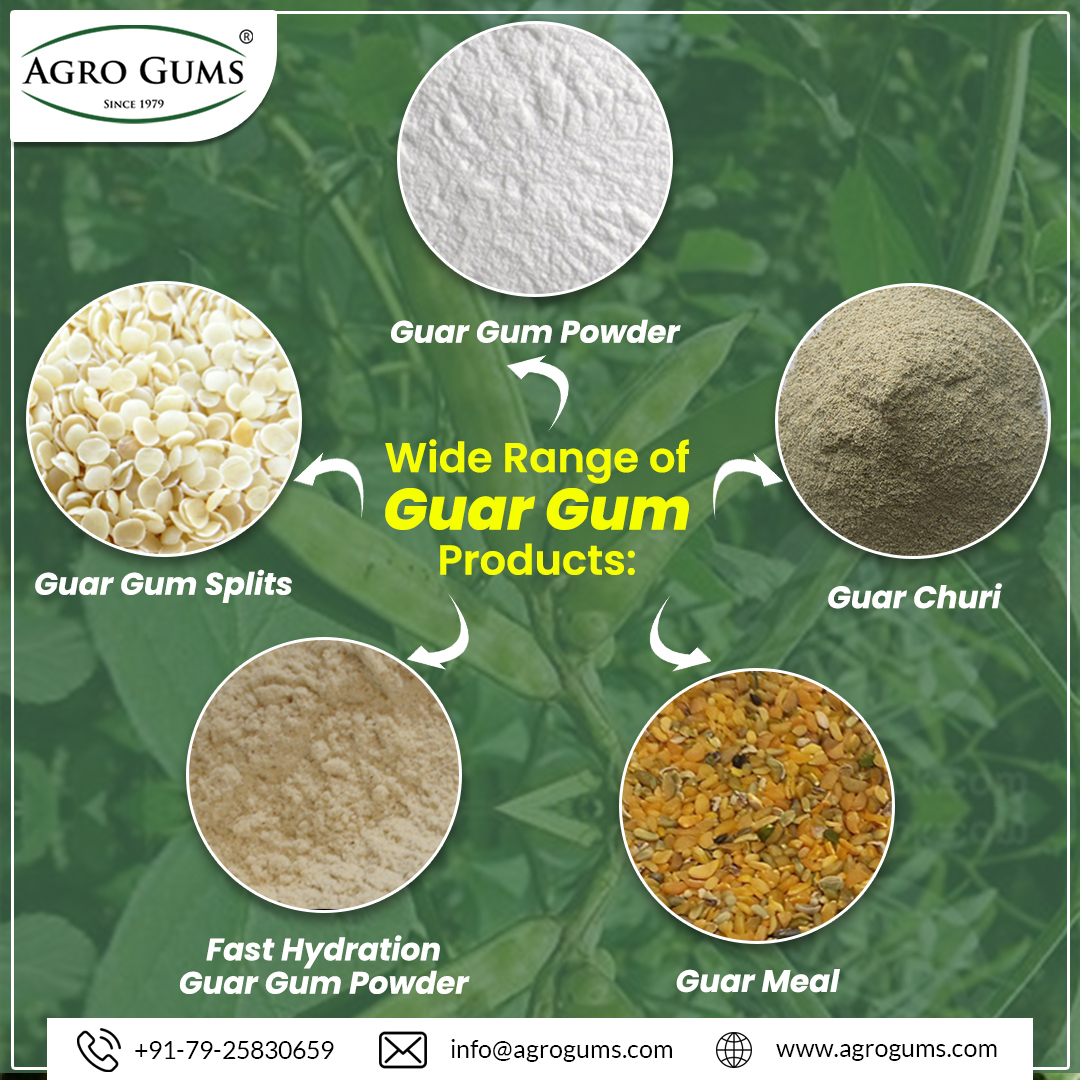Guar gum, a natural derivative of guar beans, has witnessed increasing demand across various industries in recent years. Its binding agent property has made it an essential ingredient in food, cosmetics, pharmaceuticals, and other sectors. This article delves into the growth of the guar gum market in Europe and North America, highlighting regional trends and key factors driving demand.
Understanding the Guar Gum Market
Guar gum is primarily produced in India, with the country accounting for more than 80% of global exports. As the leading producer, India supplies guar gum to industries worldwide, particularly in Europe and North America, where its applications continue to expand.
What is Driving the Demand?
- Diverse Applications: Guar gum is used in a variety of products, from gluten-free foods to hydraulic fracturing fluids in the oil and gas sector.
- Focus on Natural Ingredients: With increasing consumer preference for natural and sustainable ingredients, guar gum has become a sought-after product in these regions.
- Industrial Growth: The flourishing pharmaceutical, food processing, and personal care industries have fueled the need for guar gum in Europe and North America.
Regional Insights of Guar Gum Market in Europe
1. Food Industry Adoption
In Europe, the food industry is the largest consumer of guar gum, where it is widely used as a thickener and stabilizer in dairy products, baked goods, and sauces. The growing demand for gluten-free and vegan products has further propelled its use in food-grade applications.
Key trends include:
- Focus on Clean Label Products: European consumers demand transparency in ingredient sourcing, and guar gum’s natural origin aligns with these expectations.
- Focus on Low Fat and Calories: In North America, for health-conscious consumers, guar gum offers a solution for creating low-fat and low-calorie products.
2. Beverage Industry
In the beverage industry, guar gum ensures that drinks with multiple ingredients, such as smoothies and protein shakes, remain well-mixed. It prevents sedimentation, enhancing the overall drinking experience.
3. Expansion in the Cosmetic Industry
Guar gum plays a significant role in Europe’s cosmetic sector, where it is used to improve the texture and stability of products like creams, lotions, and shampoos. Its biodegradable and non-toxic properties make it a favourite among brands prioritizing sustainability.
4. Pharmaceutical Applications
The pharmaceutical sector in Europe utilizes guar gum for its ability to control drug release and stabilize formulations. This has led to a steady rise in demand from manufacturers focused on innovative drug delivery systems.
Regional Insights of Guar Gum Market in North America
1. Growth in the Hydraulic Fracturing Sector
In North America, particularly the United States, guar gum is heavily utilized in the oil and gas industry. Its role in hydraulic fracturing fluid as a viscosity enhancer is critical to the extraction process. The shale gas boom has significantly contributed to the region’s growing guar gum consumption.
2. Expanding Food and Beverage Sector
The food industry in North America is a major consumer of guar gum, driven by the increasing popularity of convenience foods and gluten-free products. Its use as a stabilizer in ice creams, sauces, and beverages has cemented its importance in the region.
3. Increasing Use in Nutraceuticals
The health-conscious population in North America has created a burgeoning market for dietary supplements and nutraceuticals. Guar gum, with its high fiber content and ability to support digestive health, has found a place in these products.

Factors Growing the Demand in the Guar Gum Market
Despite its growing popularity, the guar gum market faces some factors growing the demand that must provide insights for the growing demand.
1. Price Volatility
The price of guar gum is influenced by fluctuating demand from the oil and gas industry and variations in guar bean production. Managing these fluctuations is crucial for manufacturers and suppliers.
2. Competition from Synthetic Alternatives
Synthetic thickeners and stabilizers pose a competitive threat, especially in regions where cost is a significant factor. However, the preference for natural ingredients is helping guar gum maintain its position.
3. Regulatory Compliance
Exporters must navigate stringent regulations and quality standards in Europe and North America. This necessitates investments in quality control and certification.
Key Points on the Impact of Guar Gum Market:
1. Natural and Biodegradable Properties:
- Guar gum is derived from the guar bean, making it a plant-based and renewable resource.
- Its biodegradability ensures minimal long-term environmental impact, unlike synthetic alternatives.
2. Reduction of Petroleum-Based Product Usage:
- Guar gum acts as a sustainable alternative to synthetic, petroleum-based additives in various industries.
- This transition helps in the dependency on non-renewable resources.
3. Support for Industry Sustainability Goals:
- Industries adopting guar gum align their practices with eco-friendly initiatives, aiding in the reduction of waste and pollutants.
- This shift is particularly relevant in sectors such as cosmetics, food, and pharmaceuticals, where sustainability is a growing priority.
4. Relevance to Europe and North America:
- With a heightened focus on environmental preservation, these regions are increasingly turning to sustainable solutions like guar gum.
- This aligns with consumer demand for eco-conscious products and stricter regulatory standards.
FAQs
Conclusion
The guar gum market in Europe and North America is on an upward trajectory, driven by its versatility and alignment with consumer preferences for natural, sustainable ingredients. From its role in food and cosmetics to its critical applications in pharmaceuticals and oil extraction, guar gum is indispensable across various sectors. With strong support from manufacturers, suppliers, and exporters, this market is poised for sustained growth.
Web Design & Digital Marketing by Opal Infotech



